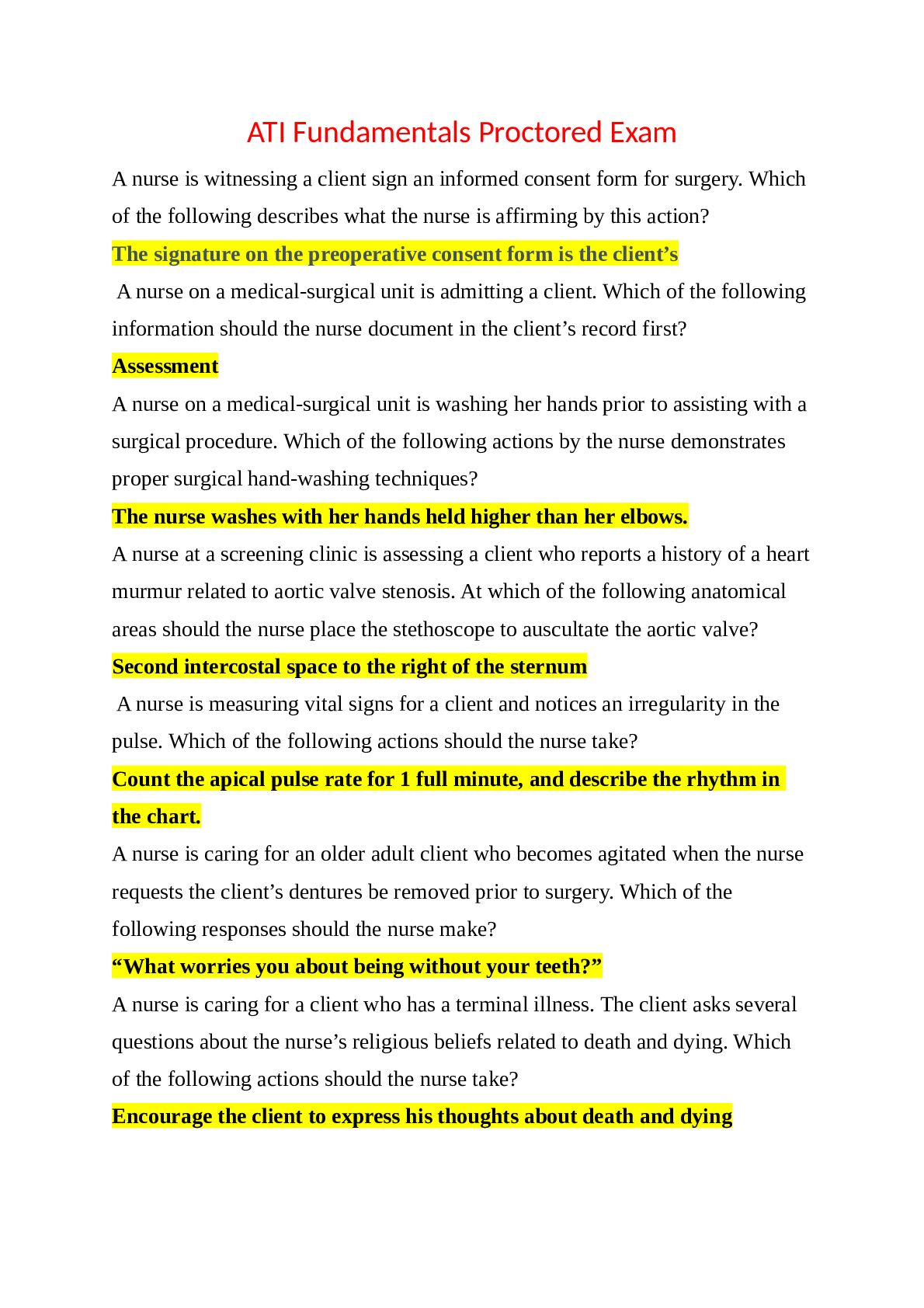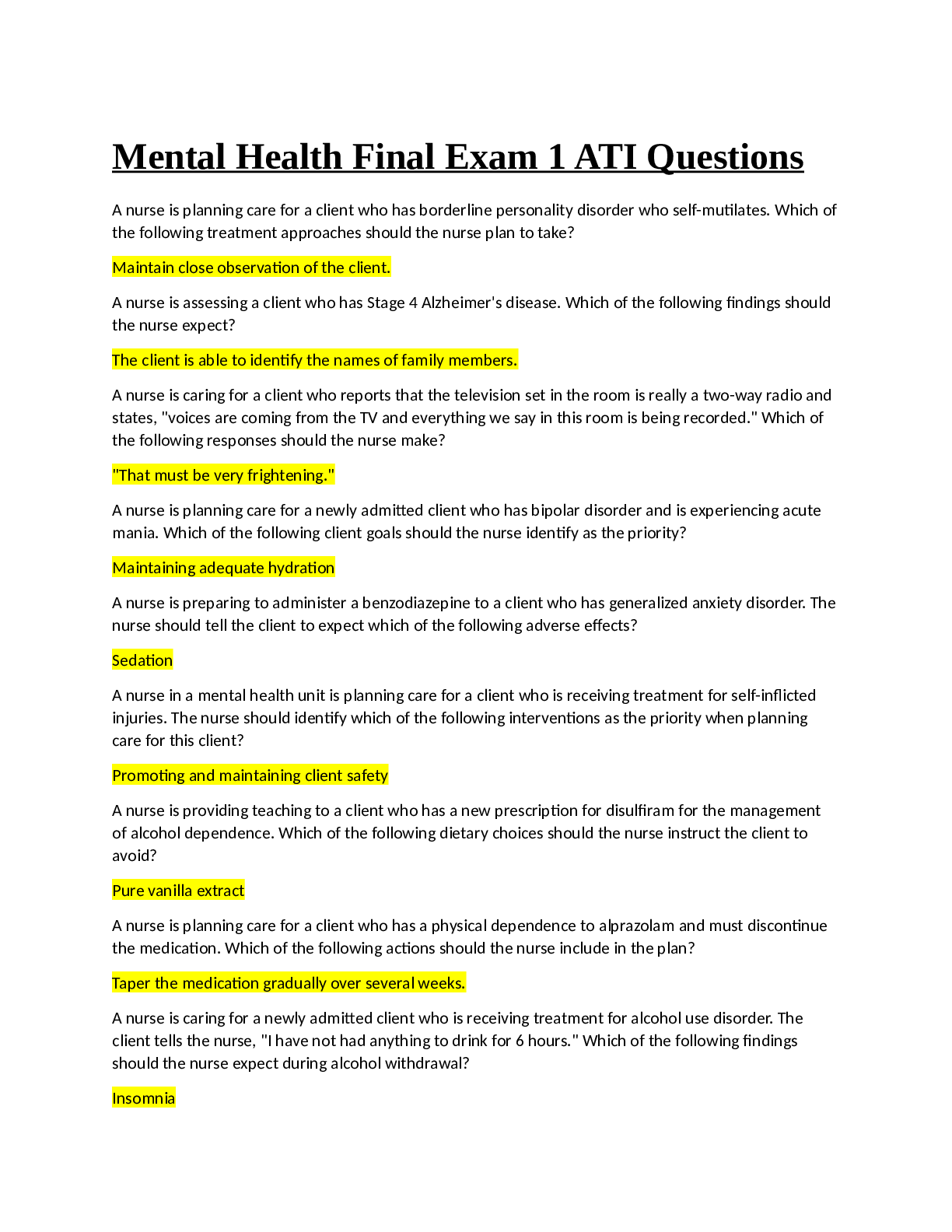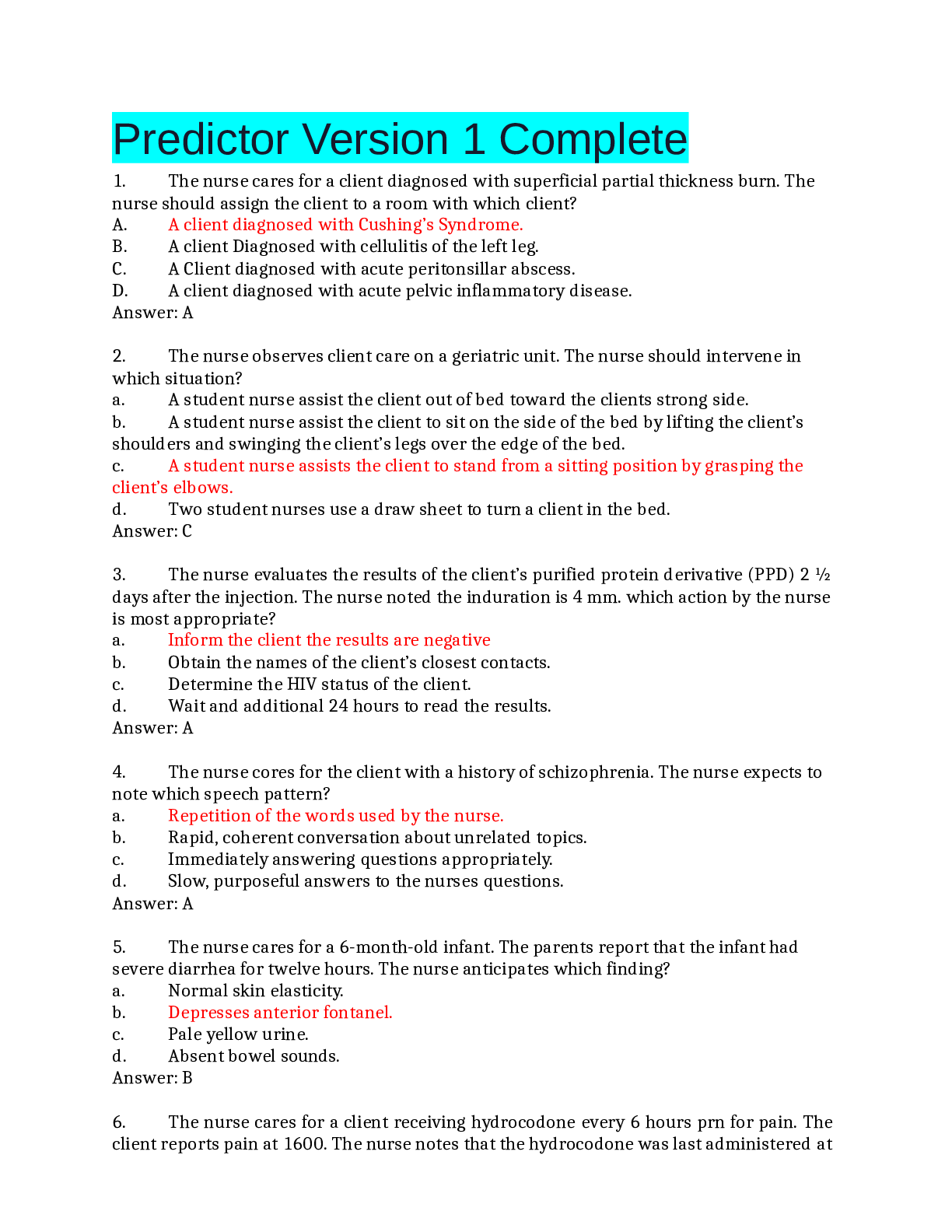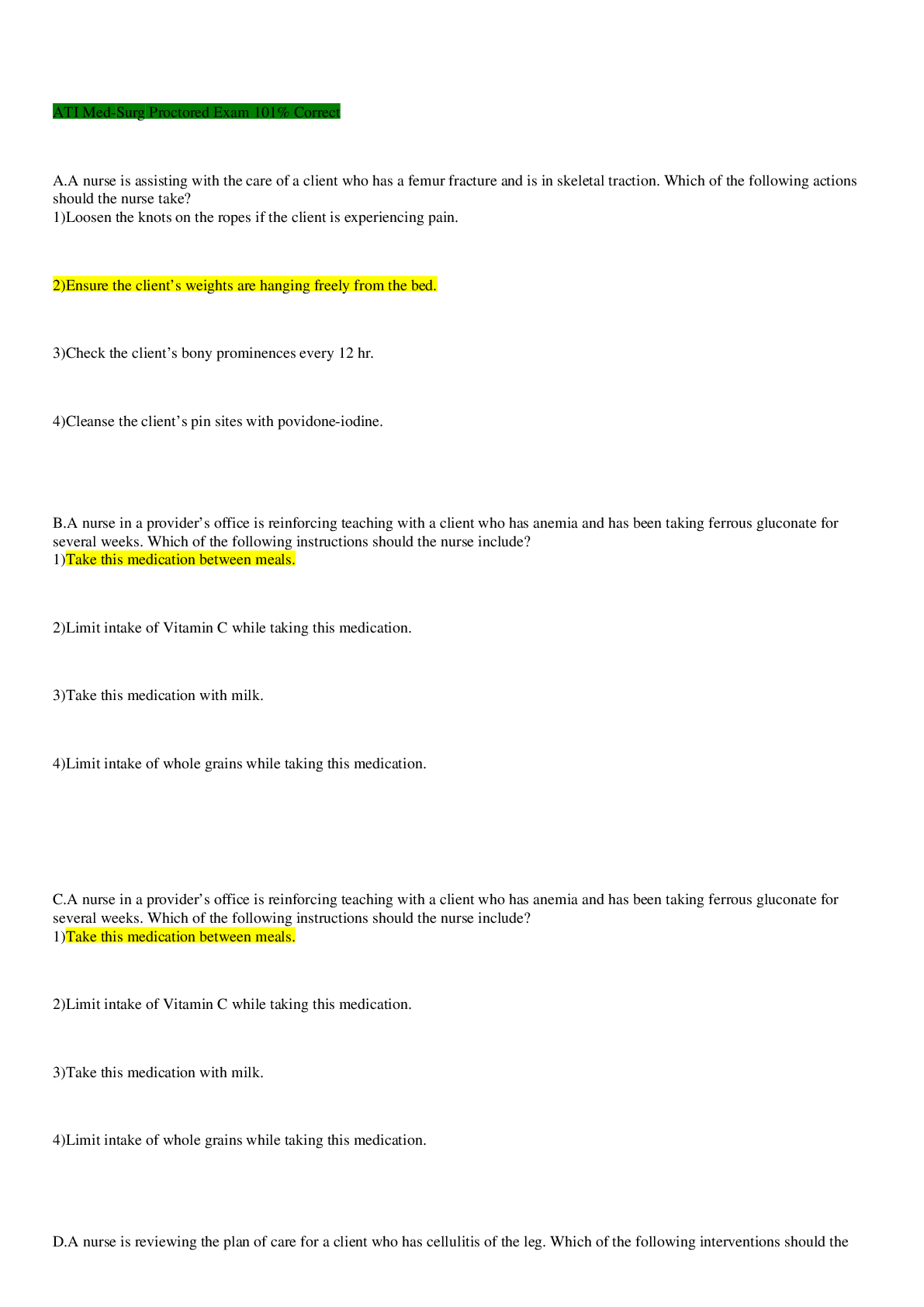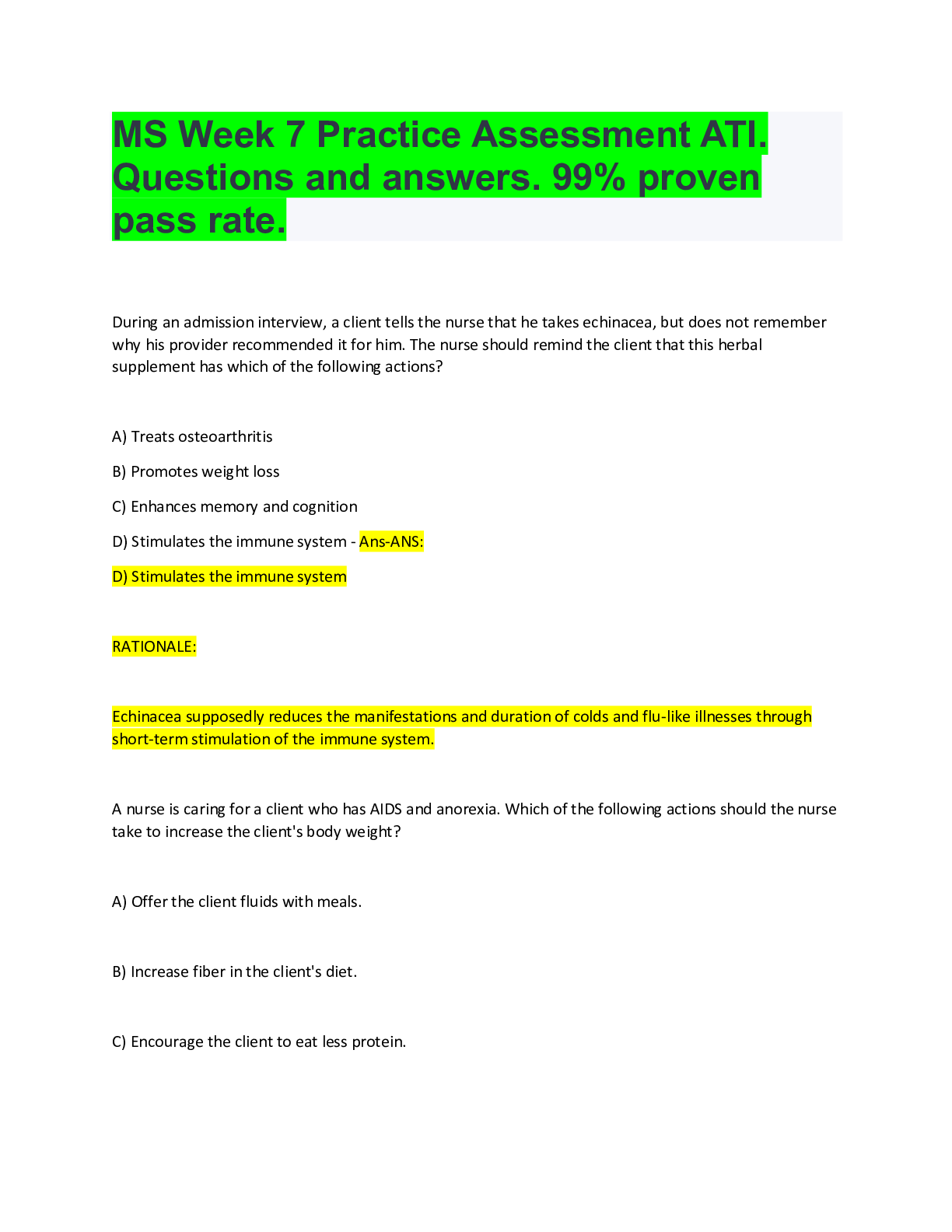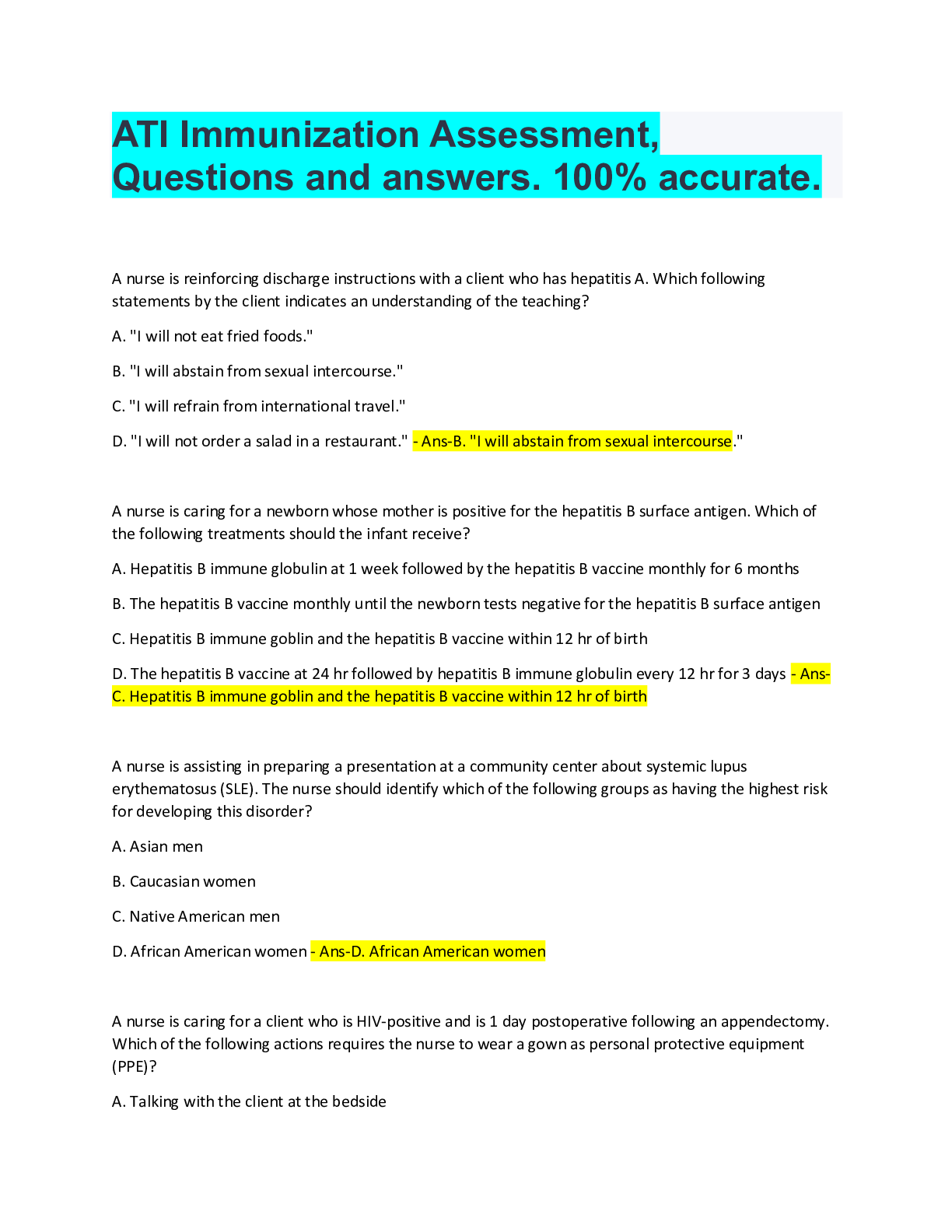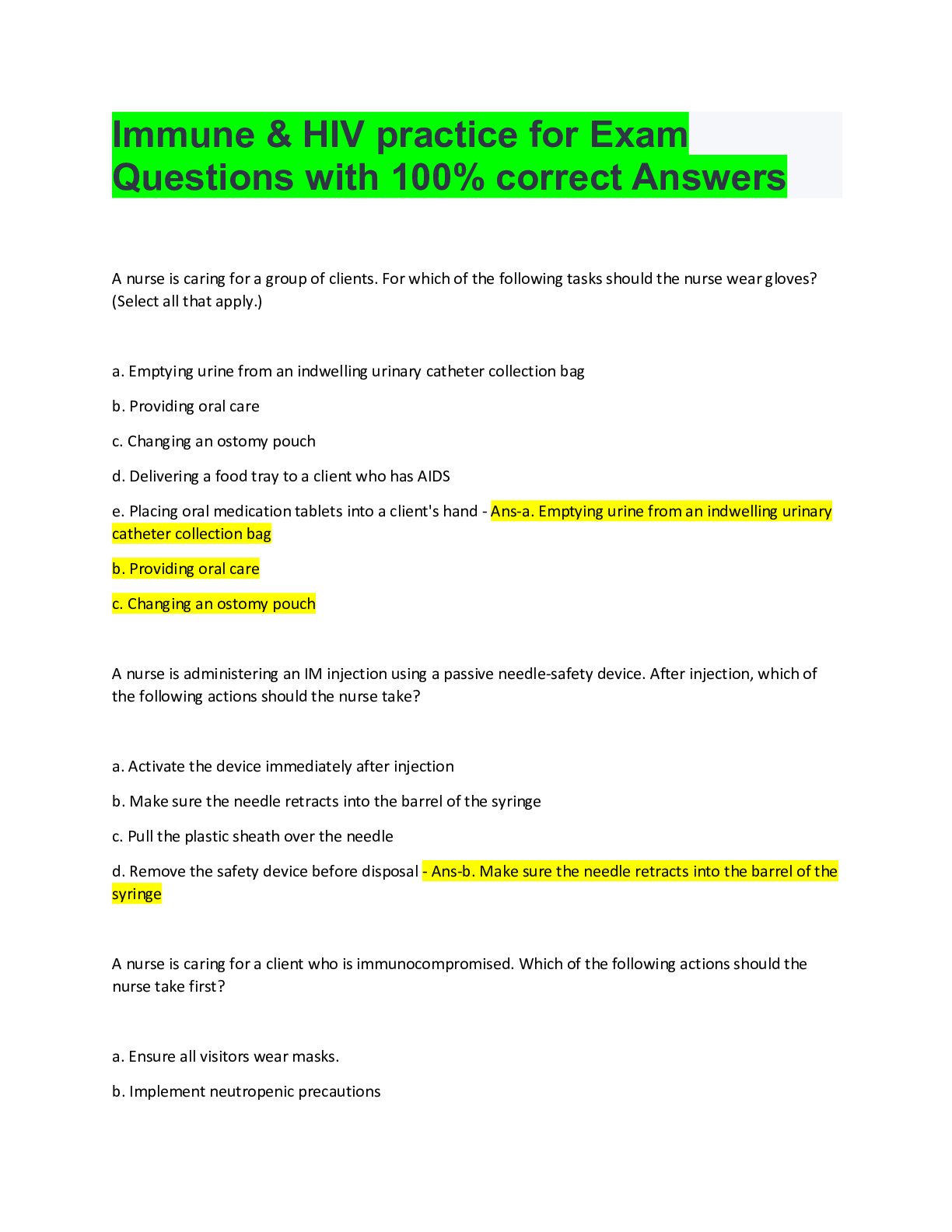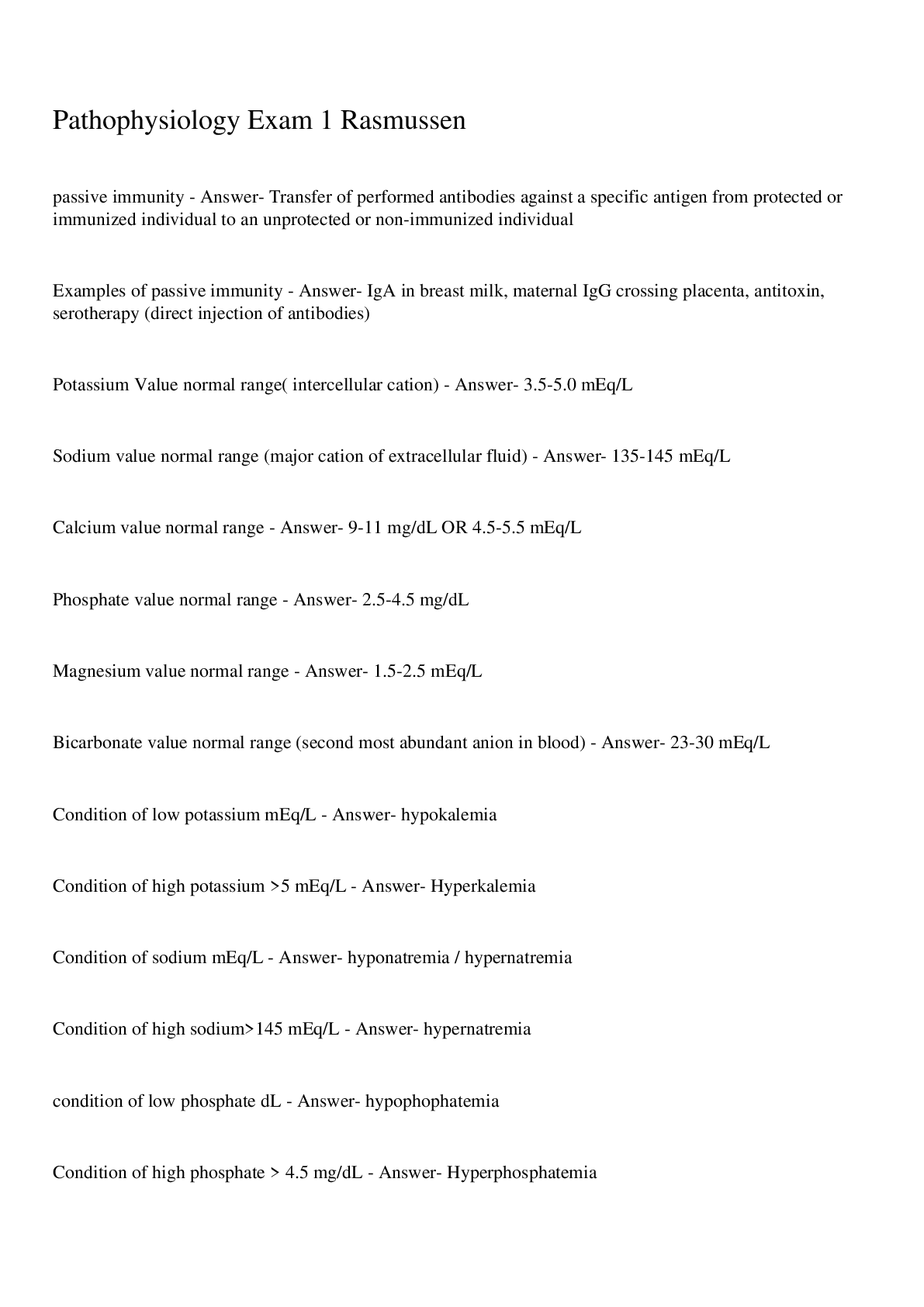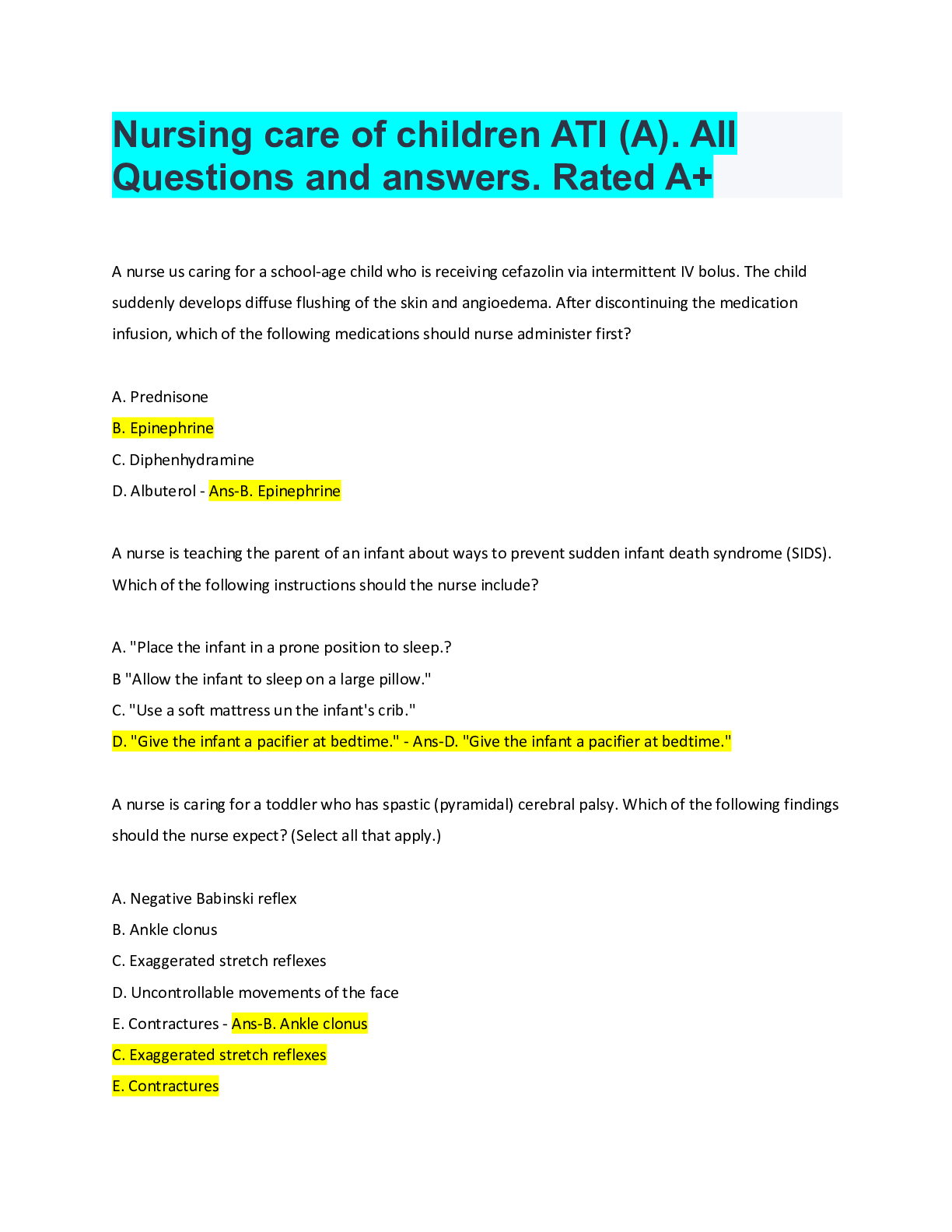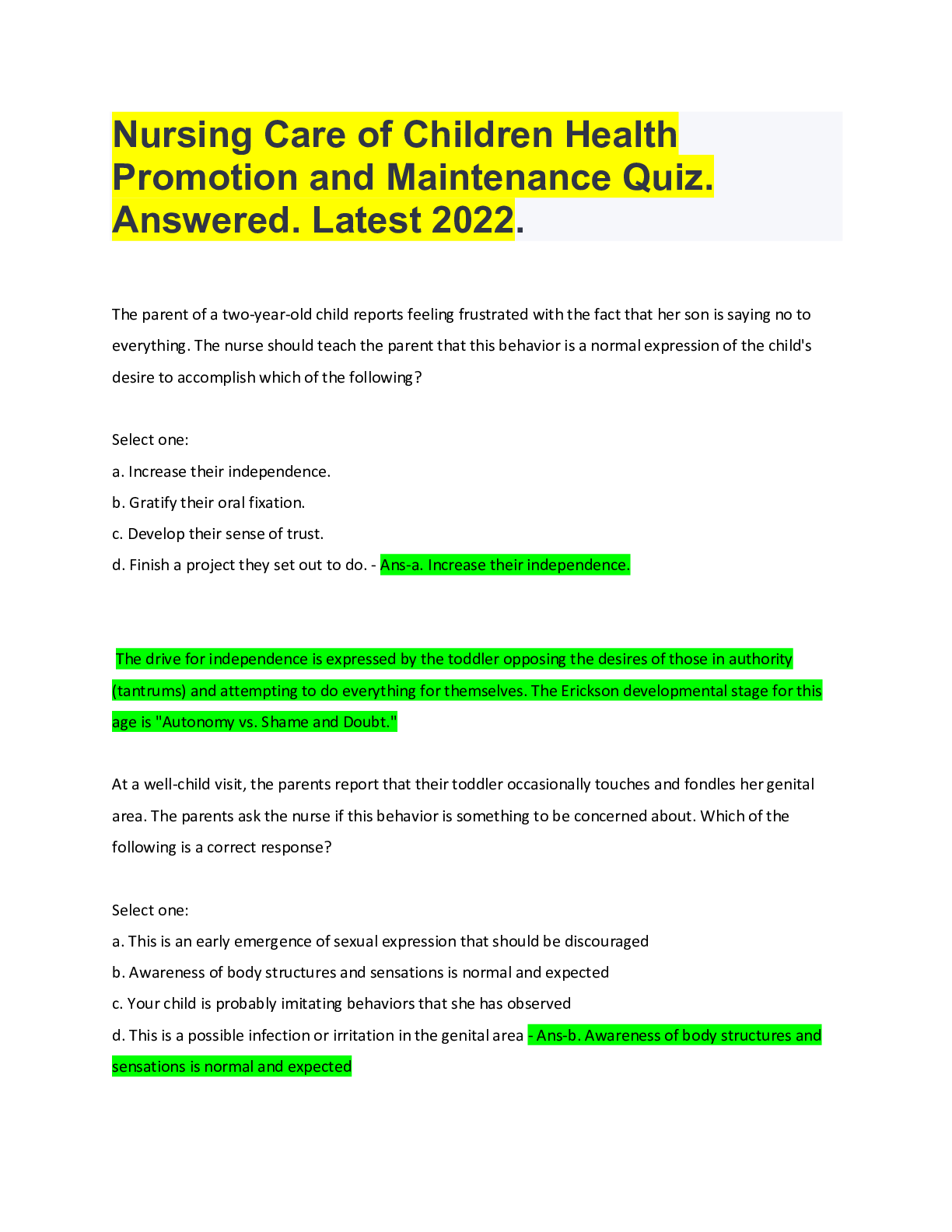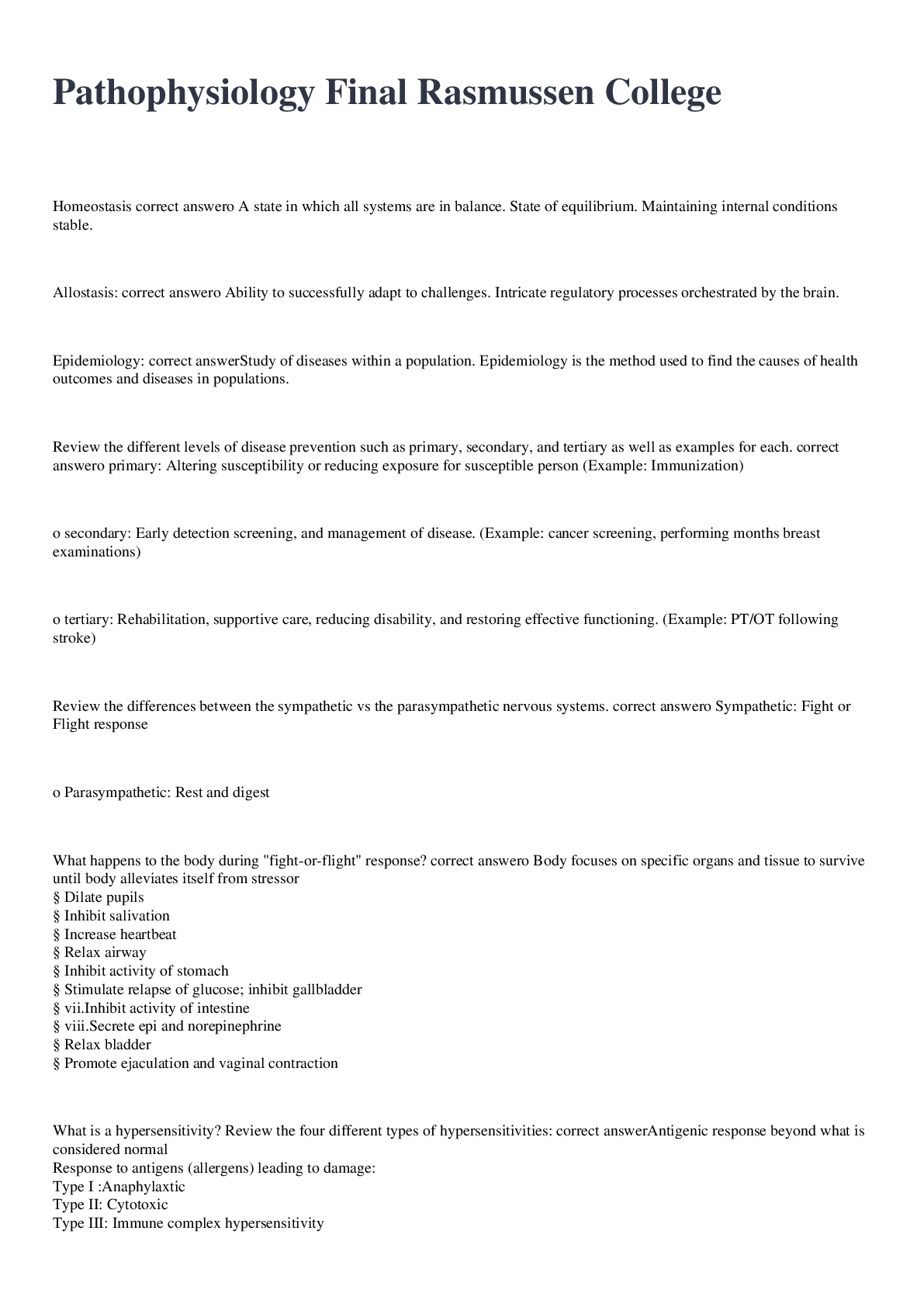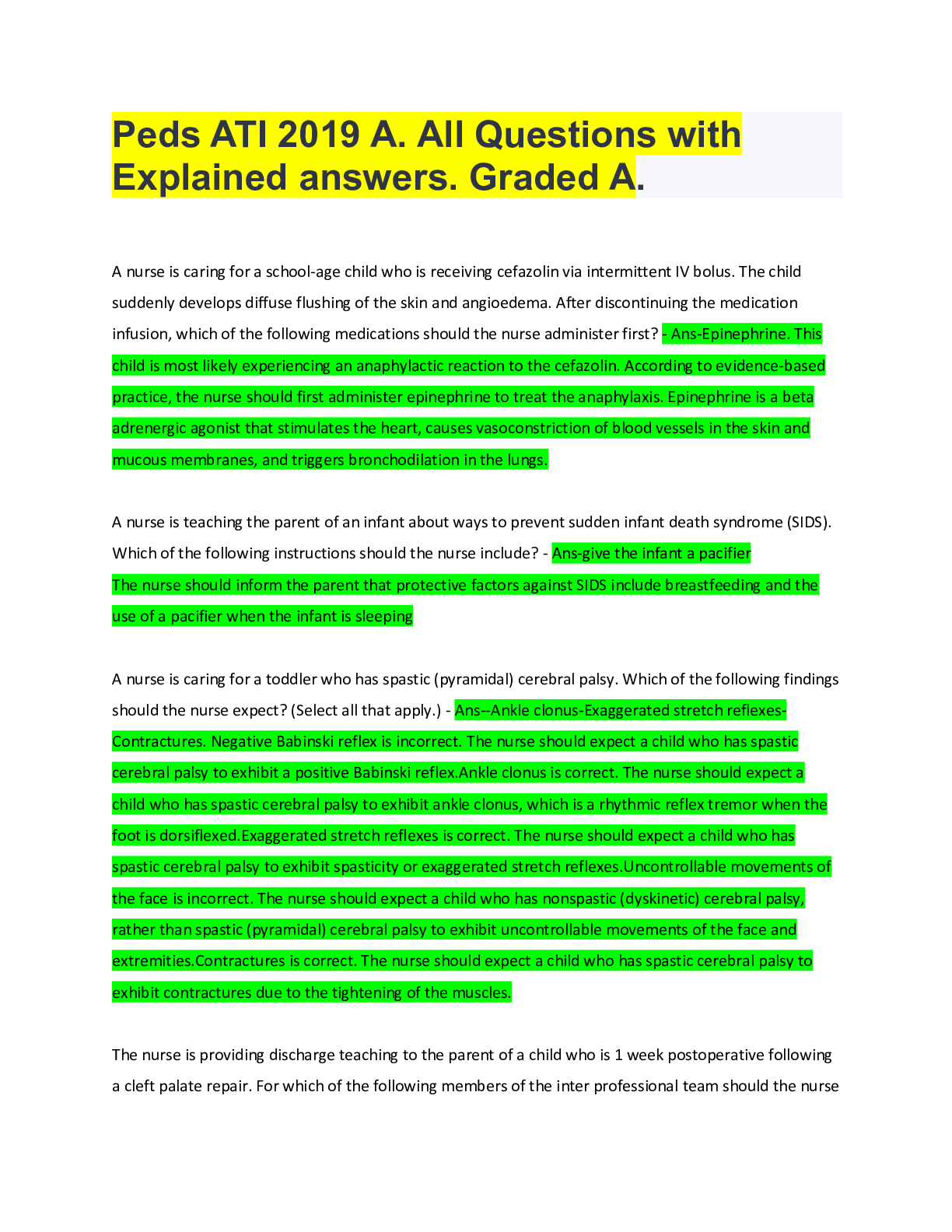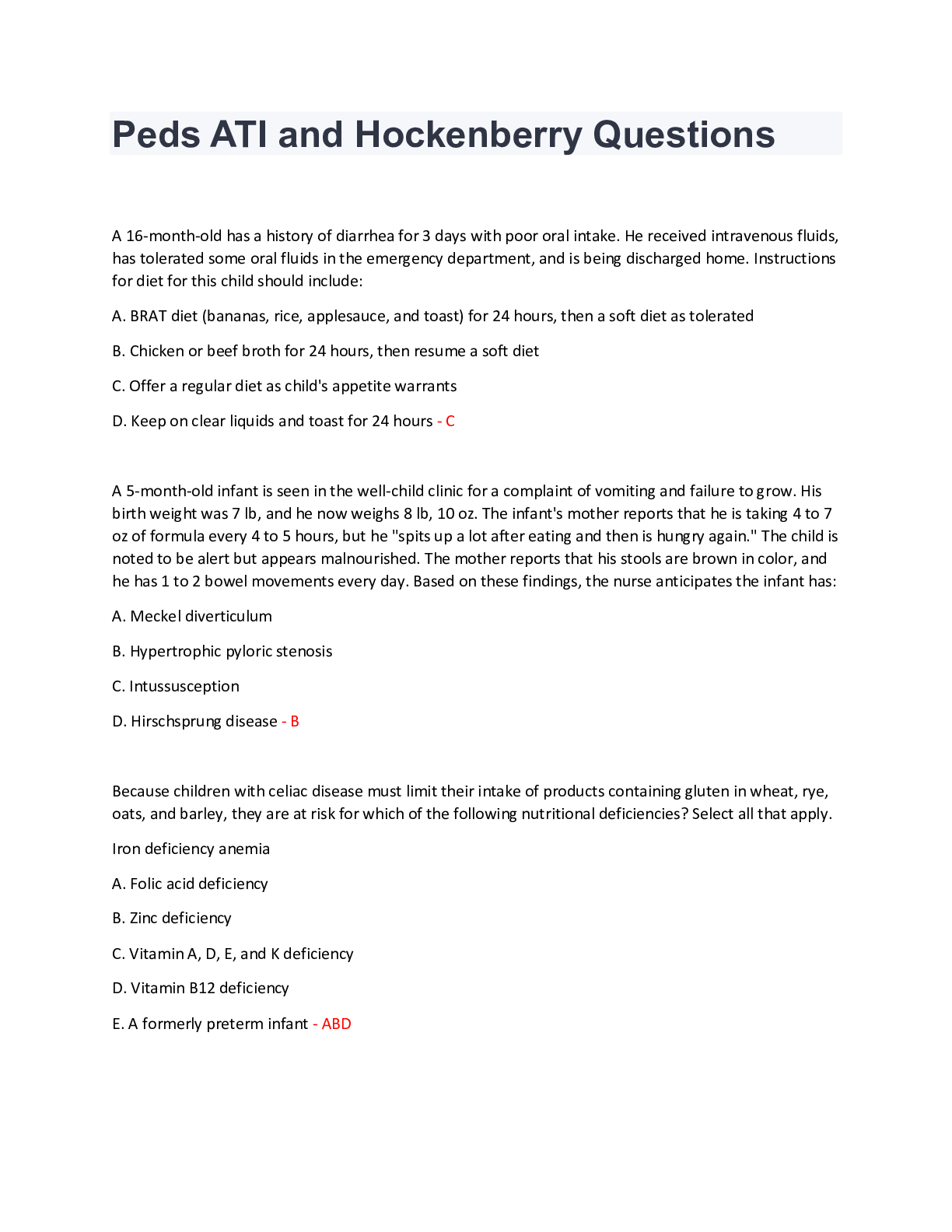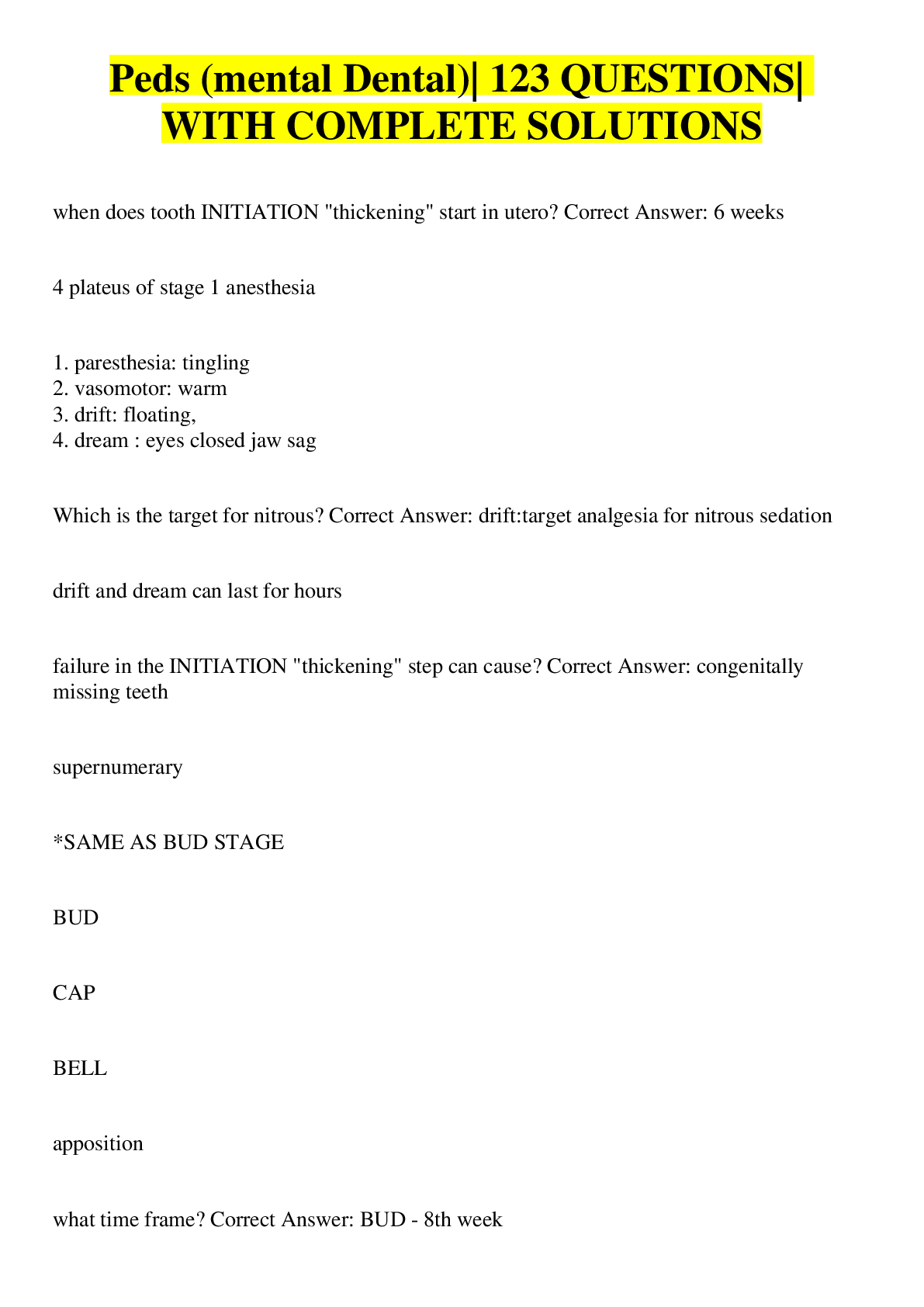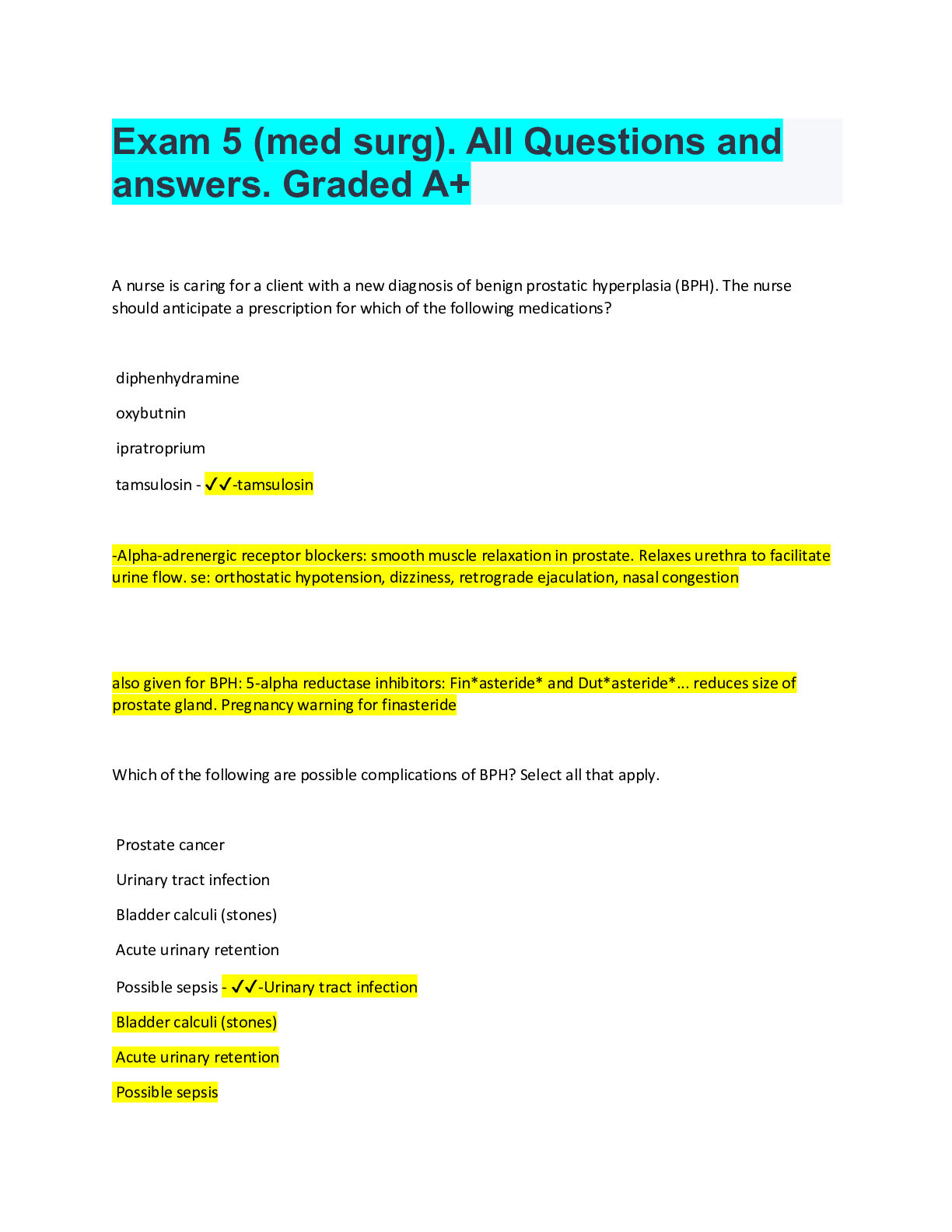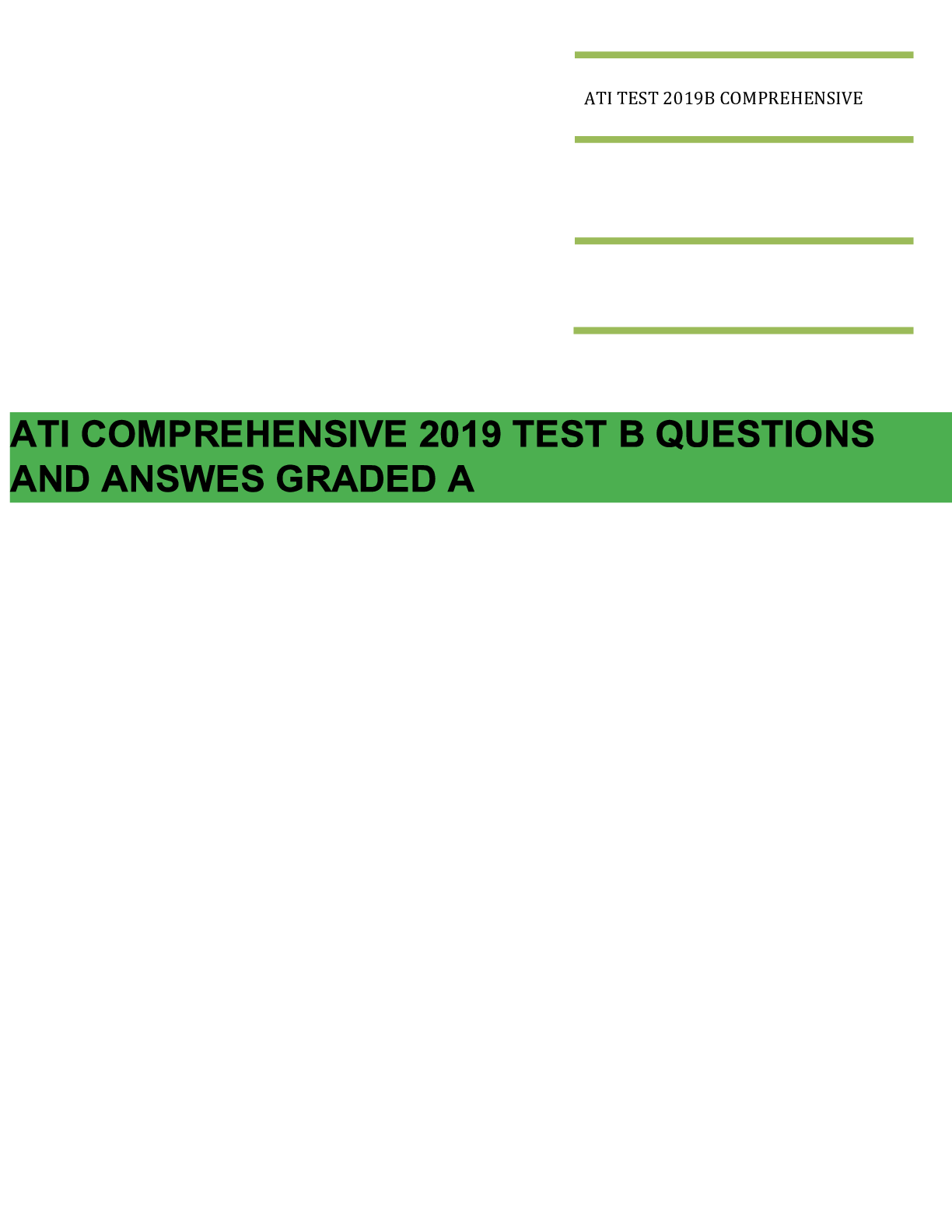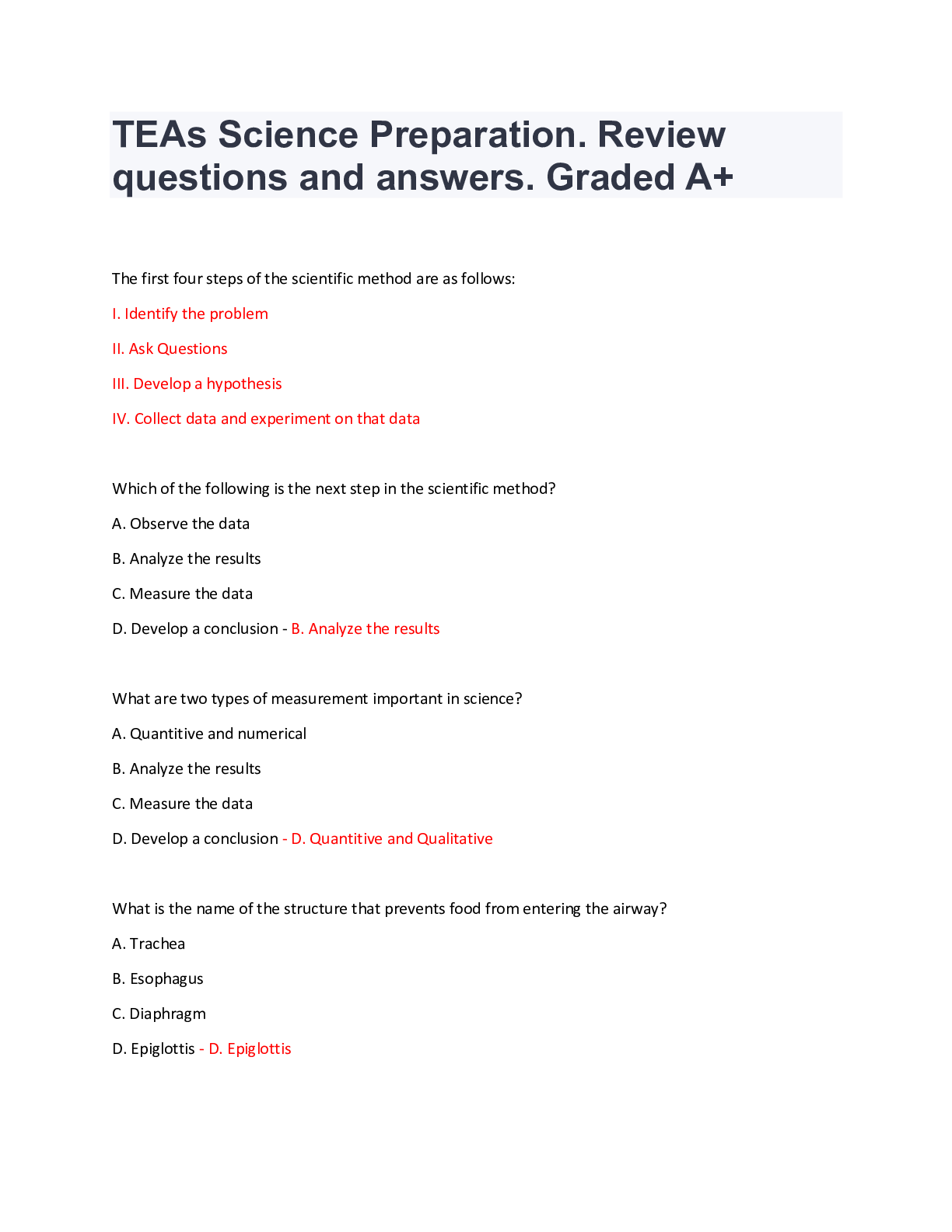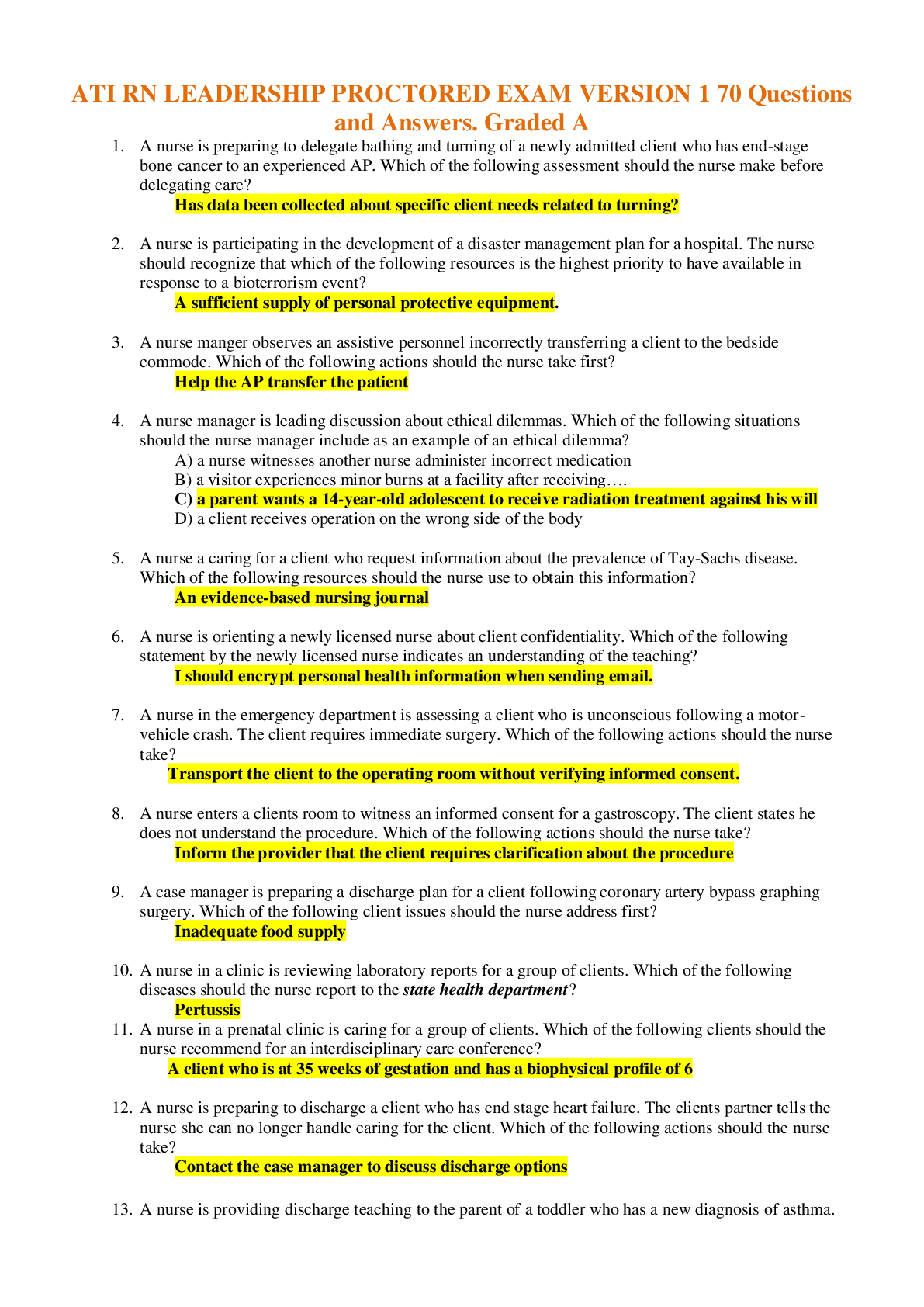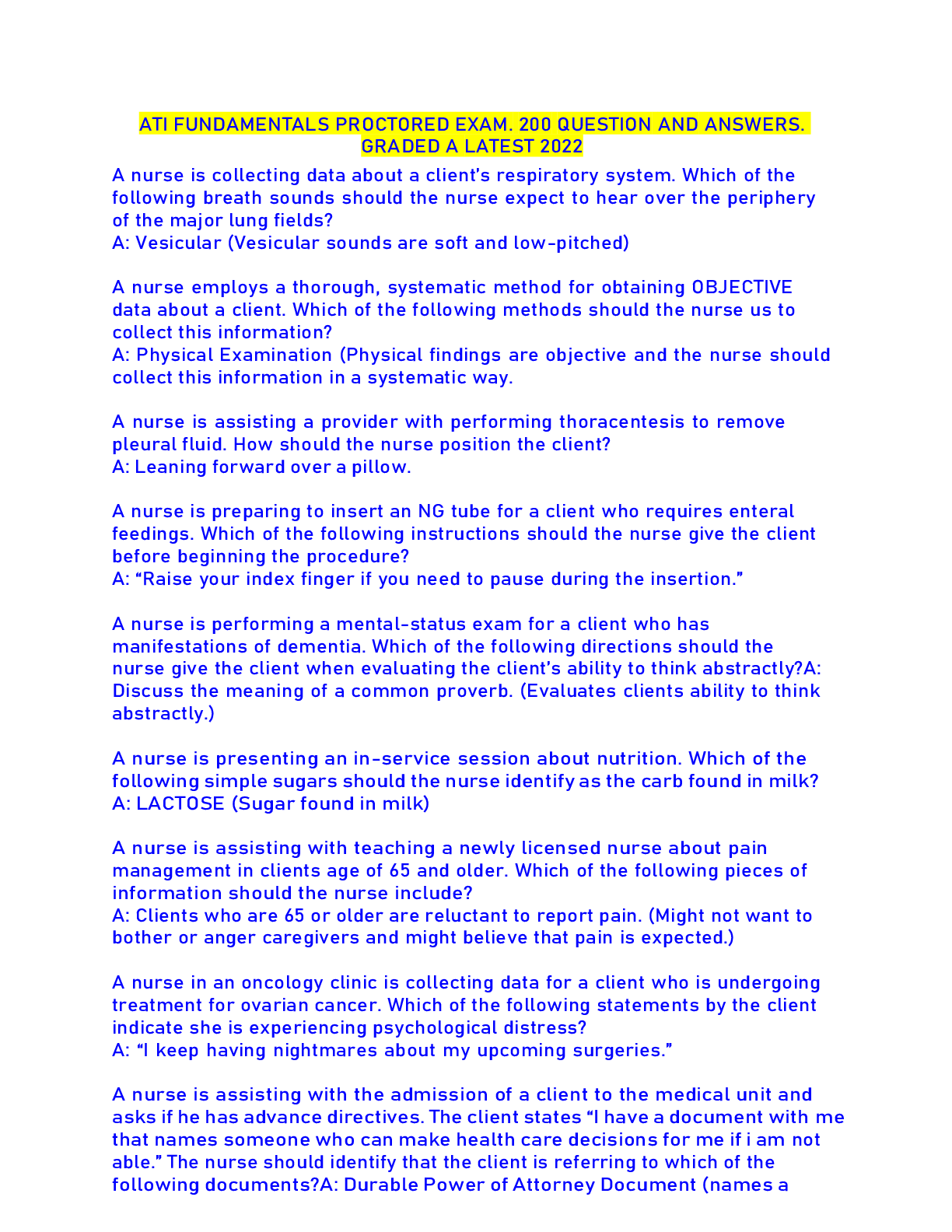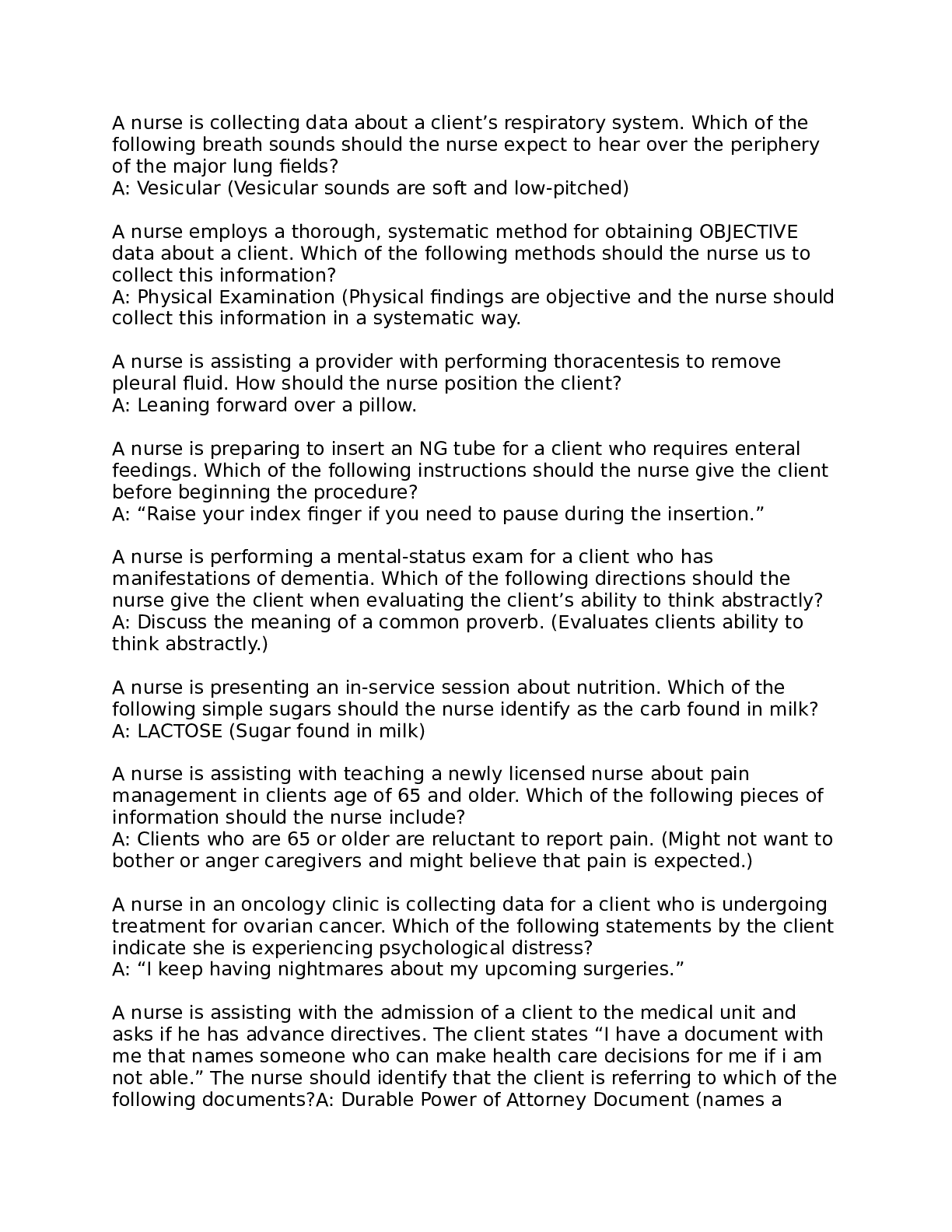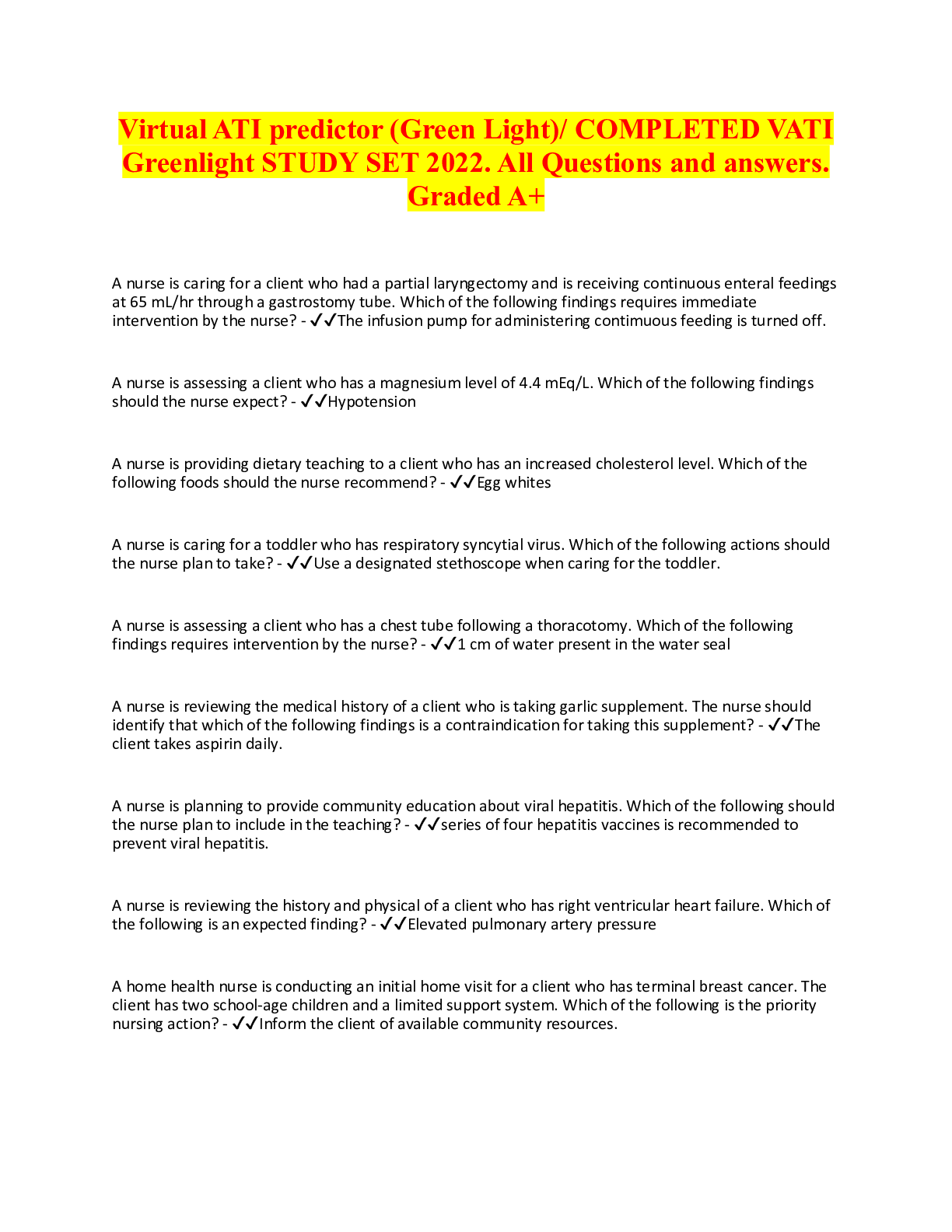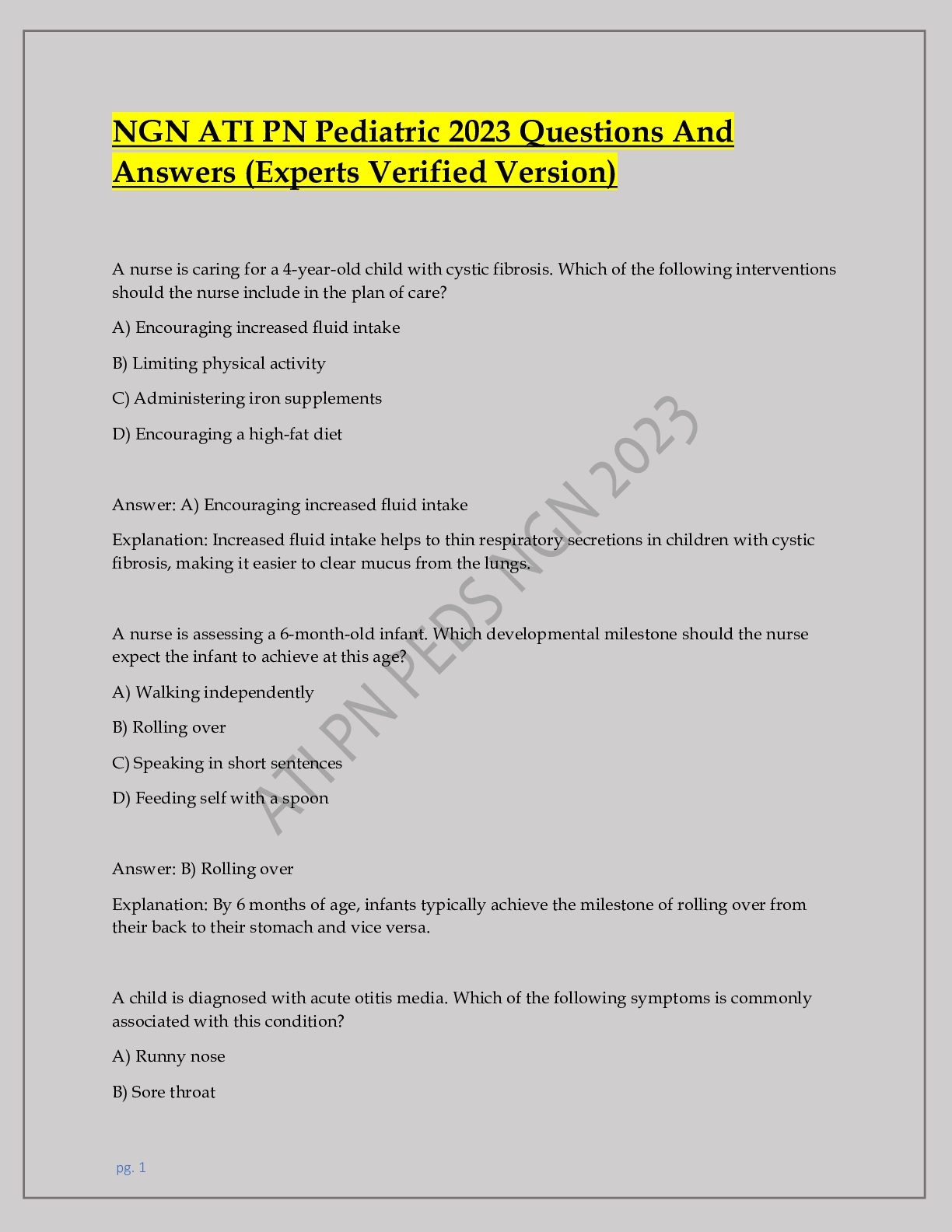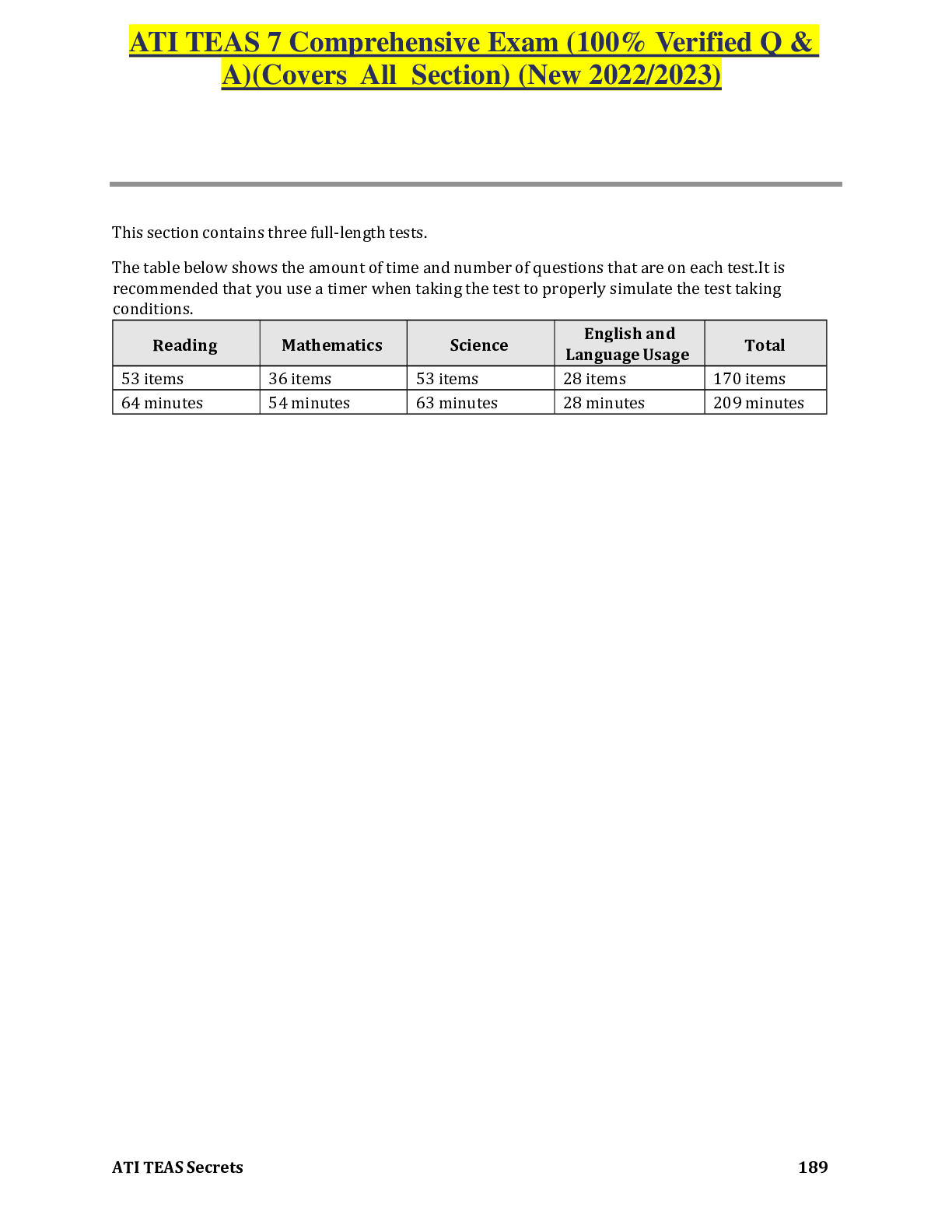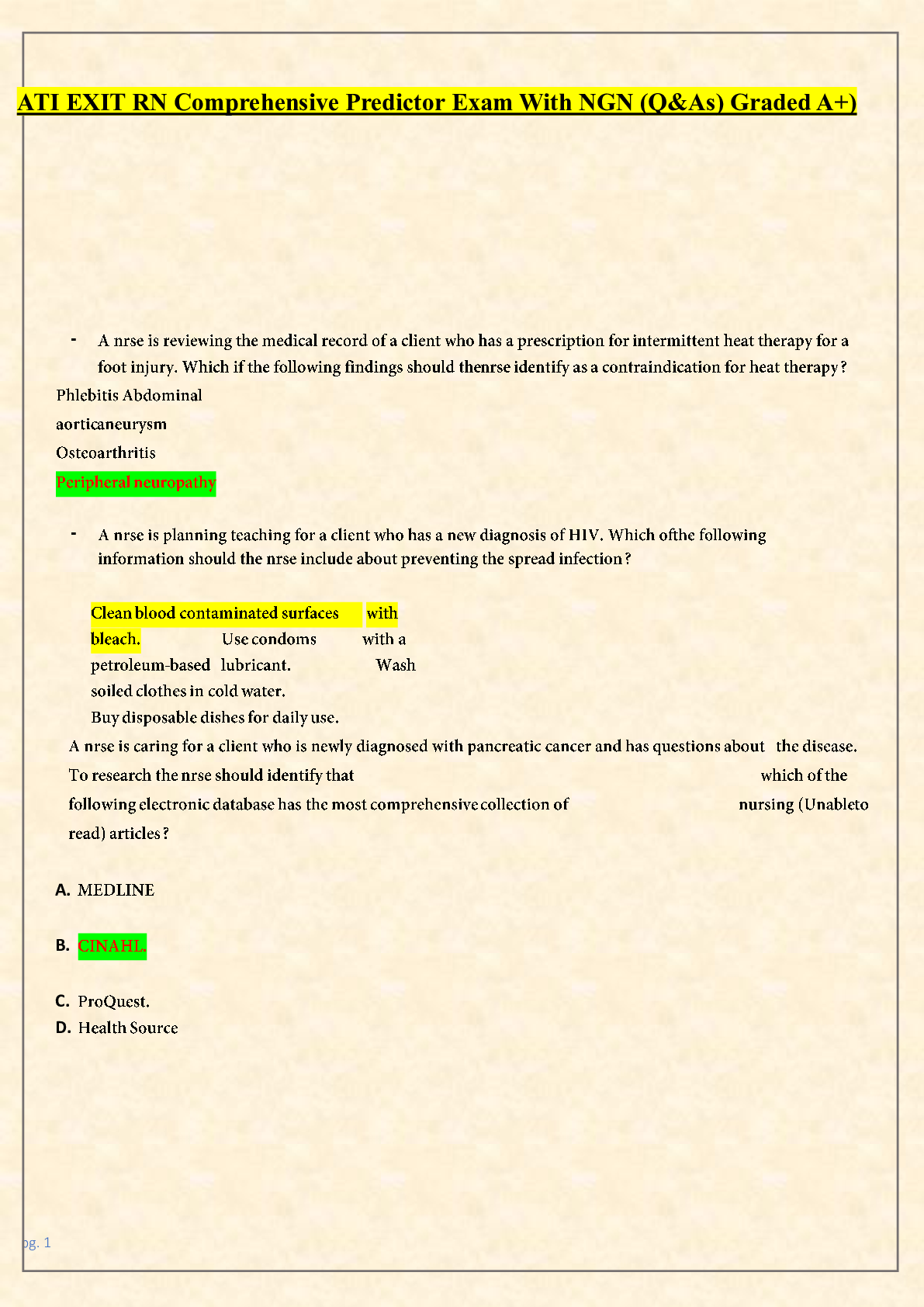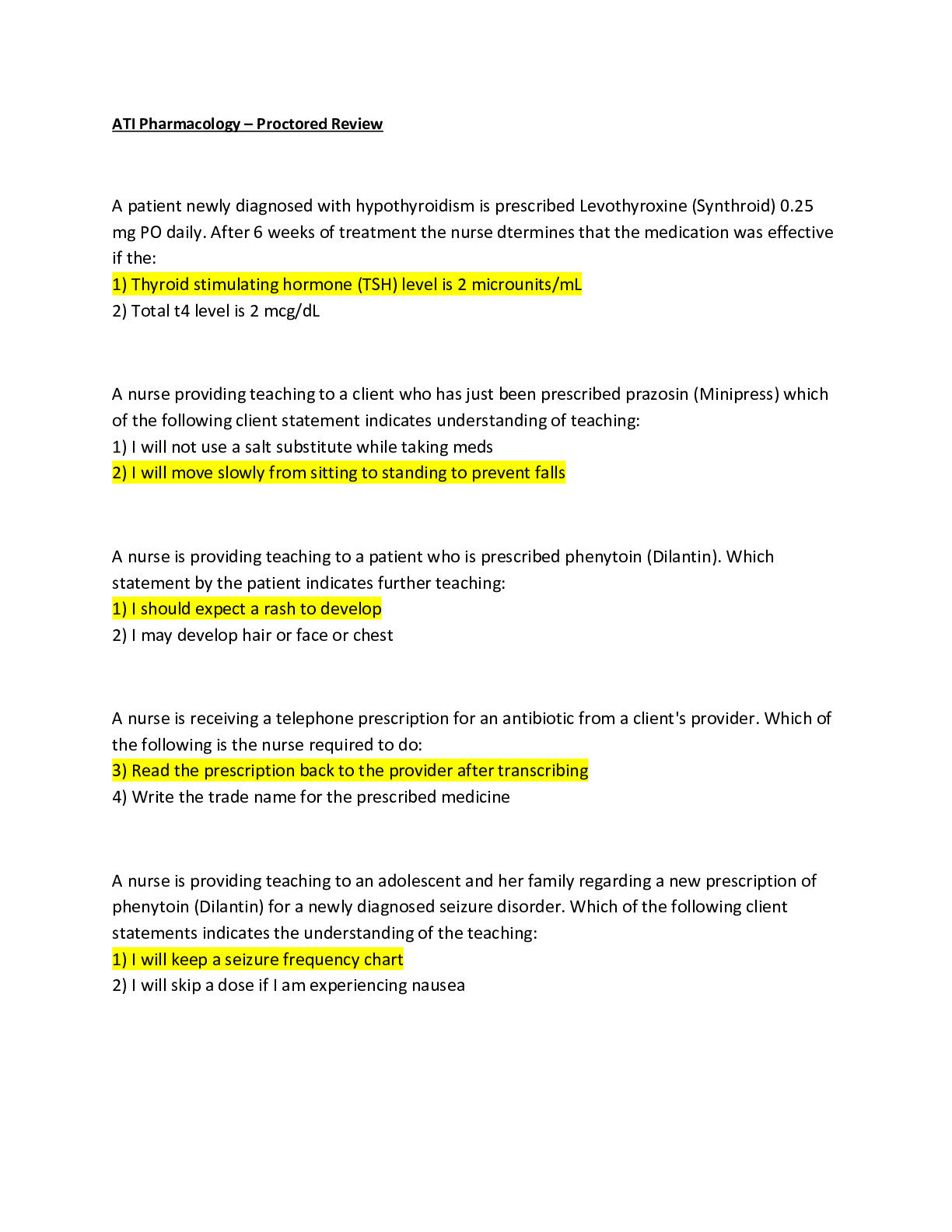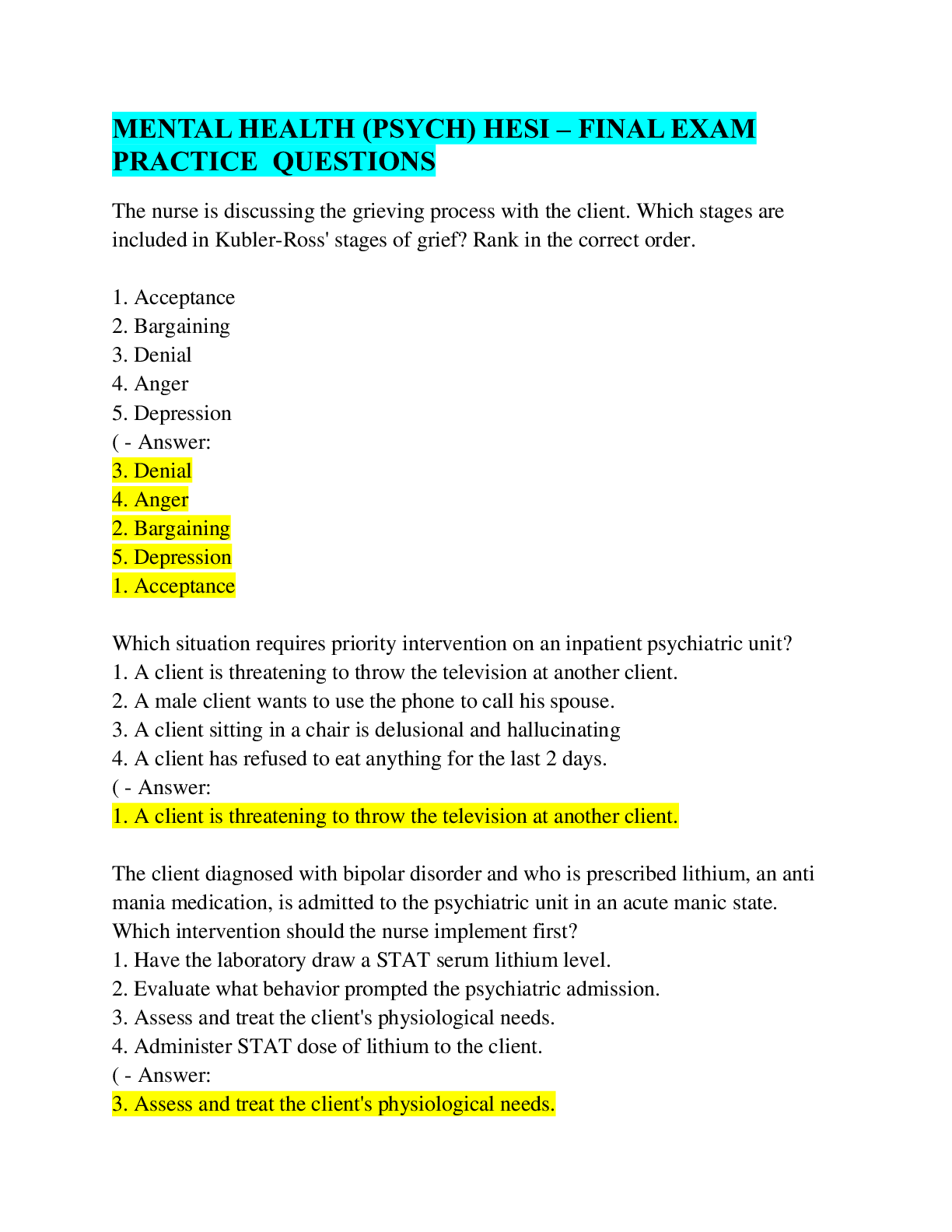Nursing Pathophysiology Exam 1, Questions and answers. Graded A+
Document Content and Description Below
Nursing Pathophysiology Exam 1, Questions and answers. Graded A+ Pathophysiology - Ans-Study of the body's response to dysfunction Disease - Ans-Interruption, cessation or disorder of a body system... Etiology - Ans-The cause of a disease Clinical manifestations - Ans-Symptoms and chief complaints Morphological changes - Ans-Structural changes that are a result of the disease process Etiological factors - Ans-Biologic agents, physical forces, chemicals, nutritional excess or deficiency, genetic factors What are the three mechanisms of cellular adaptation? - Ans-Size: atrophy and hypertrophy Number: hyperplasia Irregular shape: dysplasia (severe) and metaplasia (chronic) Intercellular accumulation - Ans-Results from normal substances, abnormal endogenous or exogenous products Dystrophic pathological calcification - Ans-In injured tissue, dead cells create calcium deposits that can cause aortic stenosis or be a result of a fracture or TB Metastatic Pathological Calcifications - Ans-Caused by an increase of serum calcium levels in non-injured tissue Chemical injuries - Ans-Lead, carbon tetrachloride, carbon monoxide, ethanol, mercury, street drugsAsphyxiation injuries - Ans-Suffocation, strangulation, drowning Hypoxic injuries - Ans-Ischemia (lack of blood flow) and anoxia (lack of oxygen) What does cellular aging cause? - Ans-Atrophy, decreased functioning Isotonic solutions - Ans-Will cause no change to cells 0.9% saline Hypertonic solutions - Ans-Will cause cells to shrink/crenate 3% saline or 5% dextrose Hypotonic solutions - Ans-Will cause cells to swell 0.45% saline Edema - Ans-Accumulation of fluid in interstitial spaces What are causes of edema? - Ans-Increased capillary hydrostatic pressure (fluid moves from capillary to interstitial space) Decrease in plasma osmotic pressure (decrease in RBC, plasma and proteins causing fluid to leak into tissues) Increase in capillary permeability (inflammation causes fluid to leak into surrounding tissues) Lymph obstruction What are the functions of Na as a cation? - Ans-Neuromuscular irritability, acid base balance through the exchange of water and bicarb, chemical reactions and membrane transport Hypernatremia - Ans-Na>147 Intercellular dehydration, convulsions, pulmonary edema, hypotension, tachycardia, pruny fingers Hyponatremia - Ans-Na<135Creates: Hypoosmolality, cellular swelling, dry mucous membranes, peripherial edema, muscle weakness and seizures Causes: low intake, fluid overload (dilutional hyponatremia) and high circulating protein levels (hypoosmolar hyponatremia) What are the functions of K as a cation? - Ans-Regulation of electrical neutrality, transmission and conduction, cardiac rhythm and muscle contraction Hypokalemia - Ans-K<3.5 Creates: decreased neuromuscular excitability, muscle weakness, smooth muscle dysfunction, dysrhythmias Causes: reduced intake and increased loss Hyperkalemia - Ans-K>5.5 Creates: increased neuromuscular iritability (tingling, cramps, restlessness and diarrhea) loss of muscle tone or paralysis Causes: increased intake (salt supplements), decreased renal excretion, insulin deficiency or cell trauma What are the functions of Ca? - Ans-Parathyroid hormone secretion, cell receptor functioning and electrical conductivity What are normal levels of Ca in the plasma? - Ans-9-10.5 mg Hypercalcemia - Ans-Creates: decreased muscular excitability, muscle weakness, cardiac arrest, kidney stones and constipation Hypocalcemia - Ans-Creates: increased neuromuscular excitability, seizures, muscle cramps What is the function of phosphate? - Ans-ATP bonds and as a buffer What are normal levels of phosphate? - Ans-2.5-4.5Hyperphosphatemia - Ans-Creates: cell lysis, tetany, parasthesia Causes: low calcium levels Hypophosphatemia - Ans-Creates: osteomalacia, muscle weakness, anemia Causes: excessive antacid intake or bleeding disorders What are the functions of Mg as an ICF cation? - Ans-Cofactor for reactions and increases neuromuscular excitability What are normal levels of Mg? - Ans-1.8-2.4 Hypermagnesemia - Ans-Creates: muscle weakness, hypotension, lethargy, bradycardia and hypoactive reflexes Causes: excessive intake/decreased excretion Hypomagnesemia - Ans-Creates: tetany, convulsions, hyperactive reflexes Causes: hypocalcemia and hypokalemia What do changes in pH cause? - Ans-Change in shape/function of enzymes and hormones Change in excitable membranes or decreased activity Decreased drug effectiveness What is the ratio between carbonic acid and bicarbonate? - Ans-1:20 How is acid base balance regulated? - Ans-H is consistently produced from metabolic breakdown; CO2 loss through breathing keeps pace with H production [Show More]
Last updated: 1 year ago
Preview 1 out of 11 pages
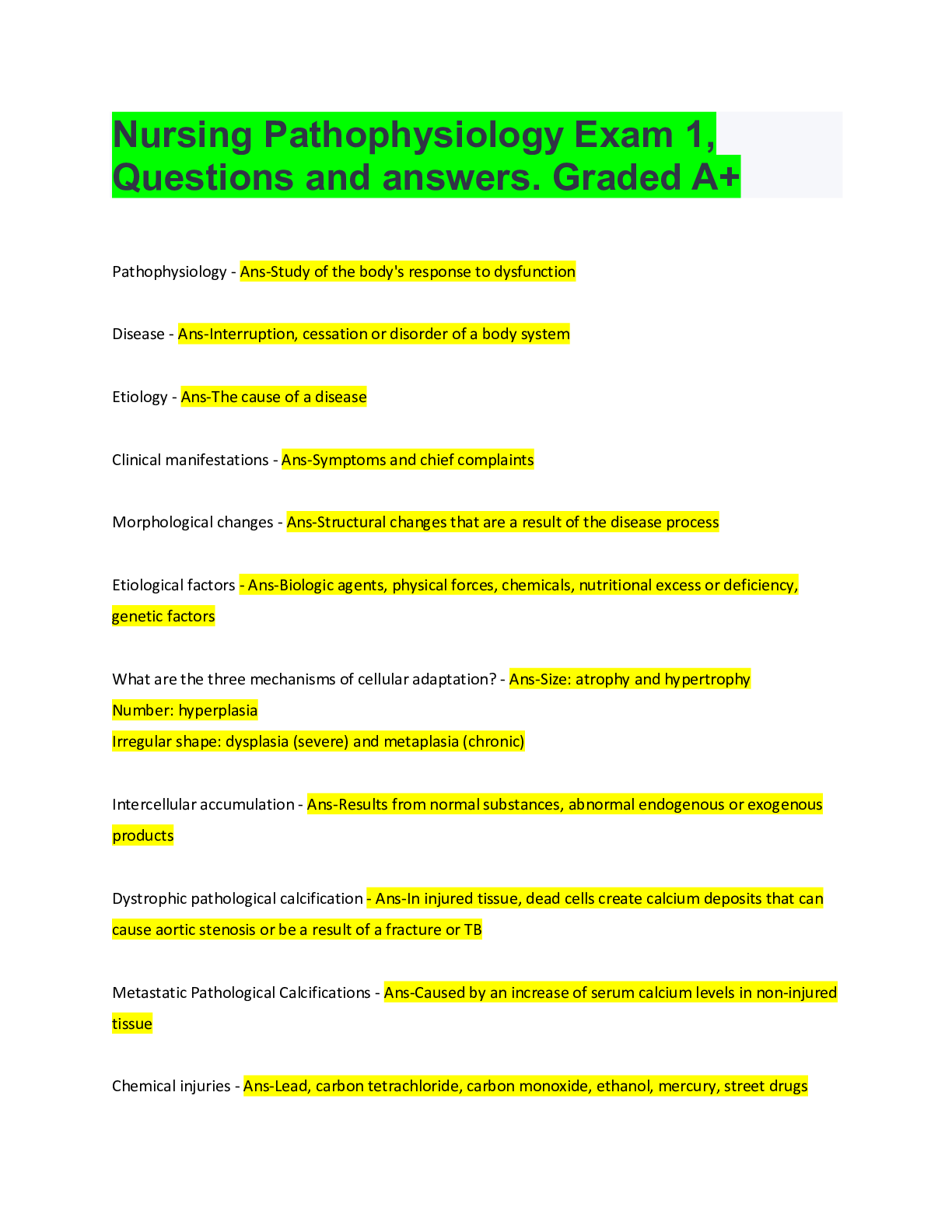
Reviews( 0 )
Document information
Connected school, study & course
About the document
Uploaded On
Jun 29, 2022
Number of pages
11
Written in
Additional information
This document has been written for:
Uploaded
Jun 29, 2022
Downloads
0
Views
89

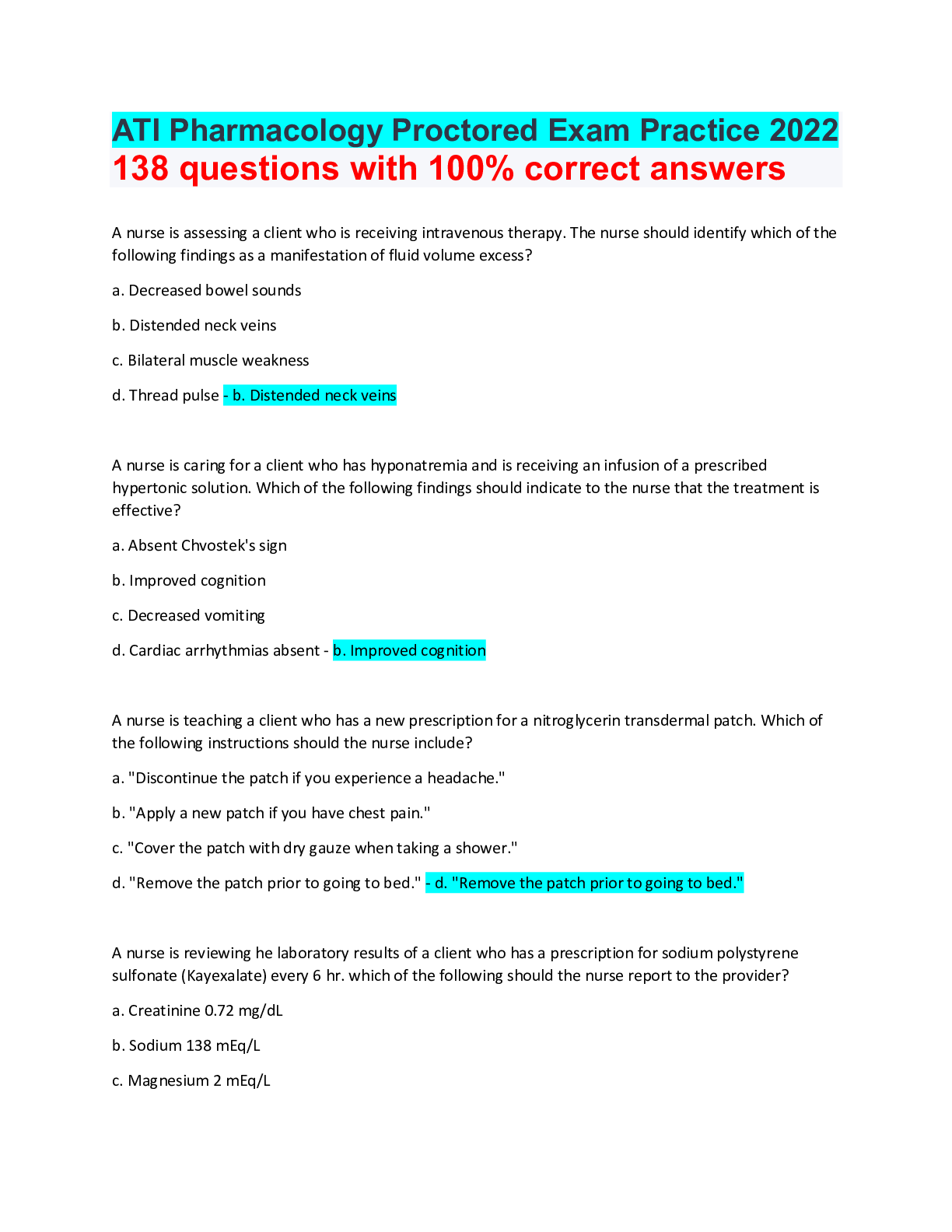
_Already Graded A.png)
